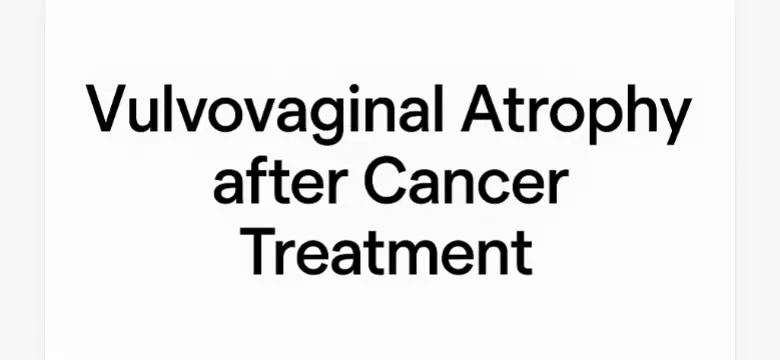Introduction
Vulvovaginal atrophy (VVA) is a common and distressing condition that affects many women following cancer treatment. Characterized by thinning, drying, and inflammation of the vaginal walls and vulvar tissues, VVA significantly impacts quality of life, particularly sexual and urinary health. It is most often caused by a reduction in oestrogen levels—a frequent side effect of cancer treatments such as chemotherapy, radiation therapy, hormone-blocking medications, or surgical removal of the ovaries.
Chemotherapy and radiation can impair ovarian function, leading to an early or abrupt menopause. Hormonal therapies, commonly used in breast and gynecologic cancers, can further suppress oestrogen. Surgical removal of the ovaries results in immediate menopause and the sudden onset of VVA symptoms.
Common symptoms include vaginal dryness, irritation, discomfort, pain during intercourse, itching, and frequent urinary infections. These symptoms are not only physically uncomfortable but can also lead to emotional distress and reduced intimacy.
Thankfully, various treatments are available. Options include local oestrogen therapy, non-hormonal lubricants, vaginal dilators, laser and radiofrequency therapies, and emerging options like intravaginal oxygen and injectables. Early recognition, regular follow-up, and individualized care are essential to help women navigate the effects of VVA and reclaim their wellbeing after cancer treatment.
Vulvovaginal Atrophy after Cancer Treatment
Cancer treatment, particularly treatments like chemotherapy, radiation, and hormone therapy or surgery, can have significant effects on the body, including the vaginal and vulvar areas. One common side effect that many women experience is vulvovaginal atrophy (VVA), which is the thinning, drying, and inflammation of the vaginal walls and vulvar tissues. It is often a result of decreased oestrogen levels, which can be a consequence of cancer treatments such as chemotherapy, radiation, or hormonal therapy or as surgical removal of the ovaries resulting into surgical menopause.
Medical Help
If you're looking for medical help who specialize in treating vulvovaginal atrophy (VVA) after cancer treatment, you would typically seek professionals in a few areas, including:
- Gynaecologists (with a focus on oncology or menopausal care)
- Oncologists (specifically those who focus on survivorship care)
- Pelvic Floor Physical Therapists
- Urogynaecologist (specializing in the female urinary and reproductive systems)
- Menopause specialists or hormone specialists
- General Practitioners
- Specialised Nurse

